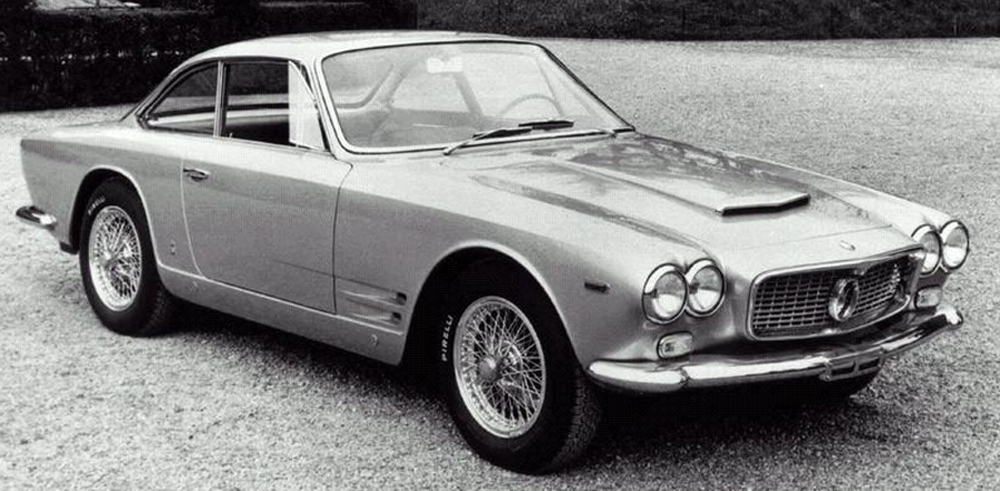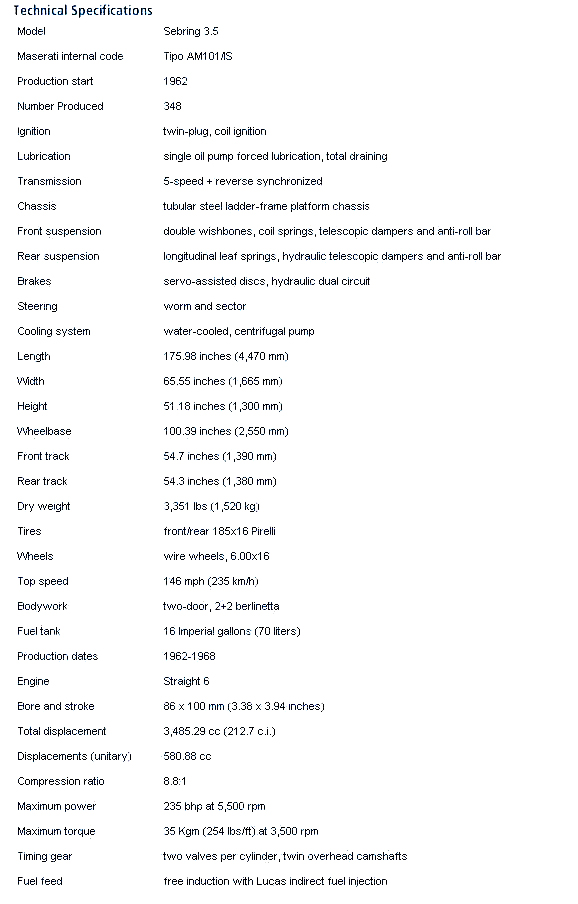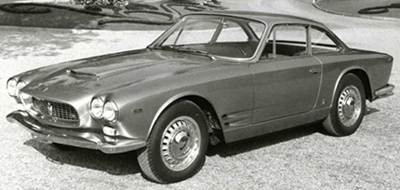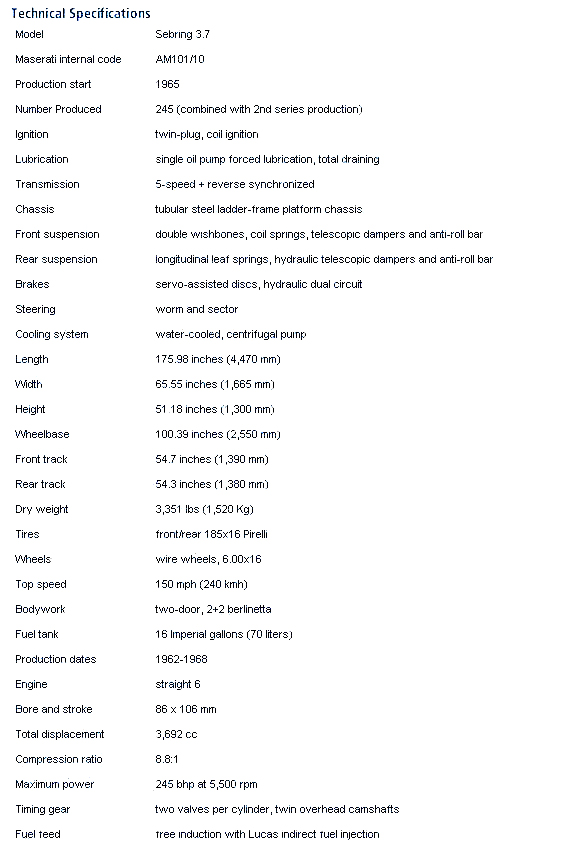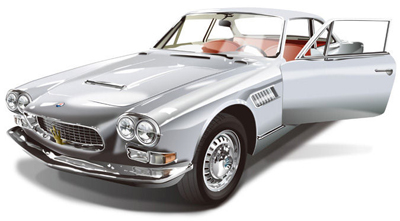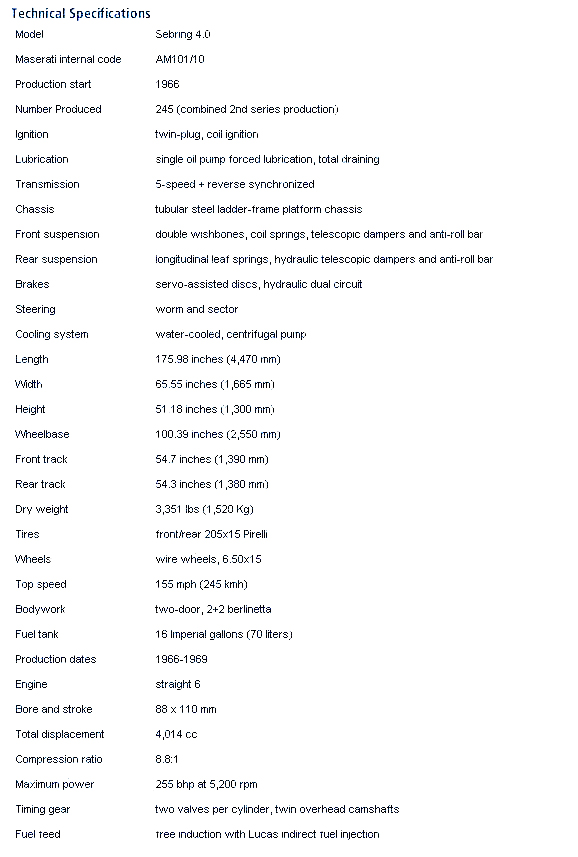|
|
|
Maserati Sebring 3.5 (1962 to 1968) In 1961, Vignale presented a stunning coupé variation based on the Maserati 3500 GT. It was named 'Sebring' after the Florida airfield track where, in
1957, Maserati took 1st and 2nd place in the famous 12 Hour race. The 2+2 coupé entered production the following year alongside the regular 3500
GT with a number of small aesthetic modifications. The chassis was similar to that of the 3500 GT spyder, at 2.5 meters long. Maserati Sebring 3.7 (1965 to 1968) In 1965 the Maserati Sebring was revised (brochures now referred to it as the "Sebring 2+2"), and two new engines were offered. The 3.7 liter power unit, first introduced with the Mistral, was now available in the Sebring, alongside a 4 liter version (see Sebring 4.0). Power was up from 220 to 245 hp. Stylistically, the modifications included a restyled front end with a chrome plate housing the double headlights, a new hood intake and the side vents were now located higher up on the front wings. Wire wheels were still available upon request. A combined total of 245 second series Sebrings were assembled. Maserati Sebring 4.0 (1966 to 1969) In 1965 the Maserati Sebring was revised, and a 4 liter engine was added the following year in the range-topping model. With 265 hp the level of
performance was impressive, as attested by the 255 kph top speed (158 mph).
Maserati Sebring 3.5
Maserati Sebring 3.7
Maserati Sebring 4.0
|
|
Home < Maserati < Maserati Cars < Heritage
|
